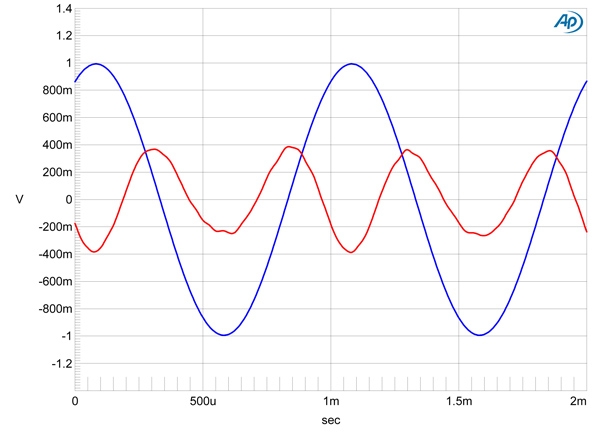| Columns Retired Columns & Blogs |
The THD Wars Are Over?

Back in the bad old pioneer days of high fidelity, the 1960s and early 1970s, amplifier manufacturers embarked on a specifications war, claiming ever lower percentages of total harmonic distortion. But, as J. Gordon Holt presciently pointed out in the 1960s, without reference to the spectrum of the distortion harmonics, the actual percentage was not in itself a reliable indicator of an amplifier's sound quality. And as those early low-THD models had distortion spectra that were heavily biased toward the sonically objectionable fifth, seventh, and ninth harmonics, and suffered from other related ills, they tended to sound quite nasty.
Sense prevailed, and the next several generations of amplifiers may have had higher THD levels, but with distortion spectra comprising the relatively innocuous second and third harmonics, they also tended to sound sweet.
But there is no doubt in my mind, especially in a world where it is possible for recordings to offer true high-resolution sound, that amplifiers (and preamplifiers) will sound better, the less spuriae with which they contaminate the signals passing through them. Recent power amplifiers from Halcro, mbl, Simaudio Moon, and Musical Fidelity have offered THD and noise levels that are more typical of a good preamplifier, while modern preamplifiers in general are significantly quieter and more linear than those of even a decade ago. In fact, some amplifiers are so quiet and have so little distortion that they are very difficult to measure!
I feel this evolution has been in part due to the quality of the parts emanating from the chip foundries of major analog integrated-circuit manufacturers like Burr-Brown, Analog Devices, and National Semiconductor. And on Monday, July 23, National Semiconductor announced a new family of high voltage operational-amplifier (op-amp) chips that can achieve just 0.00003% THD+ noise. That means that with a full-scale signal, the combination of noise and distortion lies an extraordinary 130dB below the signal!
These new op-amps, the LME49860 dual op-amp (capable of running on ±22V voltage rails), LME49710 single op-amp, LME49720 dual op-amp, and LME49740 quad op-amp (these three all capable of running on ±17V rails) are manufactured with a process said to be capable of providing a much better match than before between the on-chip npn and pnp transistors. The noise contribution of the op-amp is specified as just 2.7 nanovolts/rootHz, the gain-bandwidth product a very high 55MHz, the slew rate ±20V/µs, and the maximum output current a high 26mA, the latter enabling the chip to drive 600 ohm loads without breaking a sweat.
Audio designers have a rule of thumb that the specifications of the individual parts used in an amplifier must be 10x better than the final specification of the component as a whole. These new op-amps from National Semiconductor will make designers' lives considerably easier, it appears.
What is more interesting to audiophiles rather than nerds like me is that National Semiconductor set up a dedicated listening room at their Santa Clara, CA headquarters to evaluate their audio chips. Under the charge of National's principal audio applications engineer Mark Brasfield, whose MSB digital products have long been audiophile favorites, the room has built-in high-, mid- and low-frequency diffusers and selected tube traps, and features Wilson WATT/Puppy 7 speakers.
I hope in the fall to be able to spend some time listening in that room.
- Log in or register to post comments




































